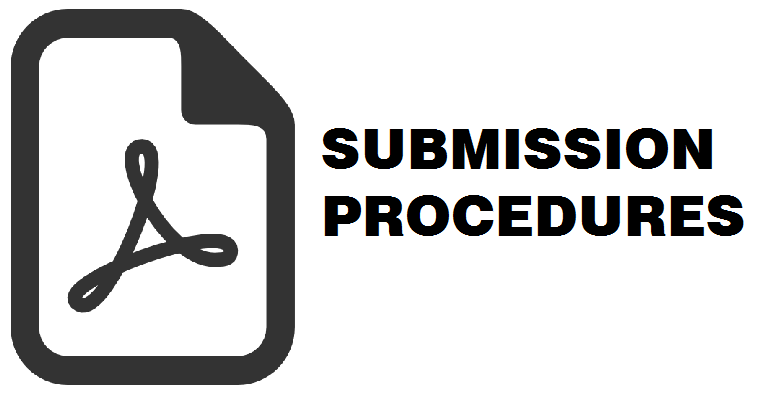Toponimi Lanskap Karst Berdasarkan Hidromorfologi Karst Gunungsewu, di Kecamatan Giritontro, Jawa Tengah
Pipit Wijayanti(1*), Rita Noviani(2), Baiq Liana Widiyanti(3), Baiq Risma Nursaly(4), Fathi Muzaqi(5)
(1) Pendidikan Geografi, Fakultas Keguruan dan Ilmu Pendidikan, Universitas Sebelas Maret, Surakarta, Indonesia
(2) Pendidikan Geografi, Fakultas Keguruan dan Ilmu Pendidikan, Universitas Sebelas Maret, Surakarta, Indonesia
(3) Teknik Lingkungan, Fakultas Teknik, Universitas Hamzanwadi, Lombok Timur, Indonesia
(4) Pendidikan Bahasa dan Sastra Indonesia, FKIP, Universitas Hamzanwadi, Lombok Timur, Indonesia
(5) Pendidikan Geografi, Fakultas Keguruan dan Ilmu Pendidikan, Universitas Sebelas Maret, Surakarta, Indonesia
(*) Corresponding Author
Abstract
Abstrak. Artikel ini mengkaji toponimi di kawasan karst Kecamatan Giritontro, Kabupaten Wonogiri, Jawa Tengah. Penelitian ini berfokus pada bagaimana proses penamaan tempat di wilayah karst mencerminkan karakteristik geografi, sejarah, dan budaya masyarakat setempat. Toponimi tidak hanya berfungsi sebagai penanda geografis tetapi juga sebagai cerminan interaksi manusia dengan lingkungannya. Metode penelitian yang digunakan adalah deskriptif kualitatif dengan pengumpulan data melalui observasi lapangan, dan wawancara mendalam. Data yang dikumpulkan mencakup nama-nama objek alam seperti bukit, gua, dan mata air, serta nama-nama buatan manusia. Hasil penelitian menunjukkan bahwa penamaan tempat di kawasan karst Giritontro banyak dipengaruhi oleh karakteristik morfologi dan hidrologi karst. Misalnya, istilah seperti "giri" dan "gunung" digunakan untuk menyebut perbukitan dan kubah karst, sedangkan "luweng" dan "telaga" digunakan untuk menamai doline atau lubang runtuh. Selain itu, istilah penamaan hidrologi juga digunakan seperti istilah “Teleng”, “Sumber/Mber”, “Dung” dan “Kali”. Proses morfologi kata seperti blending, coinage, dan compounding ditemukan dalam pembentukan toponim di wilayah ini. Penelitian ini menyoroti pentingnya pemahaman tentang sejarah dan kearifan lokal dalam konservasi lanskap karst, yang unik karena struktur hidrologi dan morfologinya. Hasil kajian ini juga menunjukkan bahwa toponimi dapat menjadi alat penting untuk memahami dan mendokumentasikan perubahan lanskap dan penggunaan lahan di kawasan karst, serta dapat menginspirasi masyarakat untuk menjaga warisan geologi dan budaya mereka.
Abstract. This study explores toponymy in the karst region of Giritontro District, Wonogiri Regency, Central Java, focusing on how place-naming processes reflect the local community's geographical, historical, and cultural characteristics. Toponymy acts as both a geographical marker and a representation of human-environment interaction. The research employs a qualitative descriptive approach, with data collected through field observations and in-depth interviews. The data includes names of natural features, such as hills, caves, springs, and man-made locations. Findings reveal that the naming of places in the Giritontro karst region is strongly influenced by its unique morphological and hydrological characteristics. For instance, terms like "giri" and "gunung" refer to hills and karst domes, while "luweng" and "telaga" denote dolines or sinkholes. Hydrological terms such as "Teleng," "Sumber/Mber," "Dung," and "Kali" are also commonly used. Additionally, word formation processes such as blending, coinage, and compounding play a significant role in toponym creation. This study underscores the importance of understanding local history and wisdom in conserving karst landscapes, renowned for their unique hydrological and morphological features. Furthermore, it demonstrates that toponymy is a valuable tool for documenting and understanding landscape changes and land use while inspiring communities to safeguard their geological and cultural heritage.
Submitted: 2024-10-04 Revisions: 2025-01-17 Accepted: 2025-02-17 Published: 2025-02-17
Keywords
Full Text:
PDFReferences
Andre, K. (2009). An example of karst terminology evolution 1 Foreword from''Dolina to''Tiankeng". CARSOIOGICA SINICA, 28(2).
Ayu Segara, N. B. (2017a). JURNAL GEOGRAFI Media Pengembangan Ilmu dan Profesi Kegeografian Kajian Nilai Pada Toponimi Di Wilayah Kota Cirebon Sebagai Potensi Sumber Belajar Geografi Info Artikel (Vol. 14). Retrieved from http://journal.unnes.ac.id/sju/index.php/ujet
Ayu Segara, N. B. (2017b). JURNAL GEOGRAFI Media Pengembangan Ilmu dan Profesi Kegeografian Kajian Nilai Pada Toponimi Di Wilayah Kota Cirebon Sebagai Potensi Sumber Belajar Geografi Info Artikel (Vol. 14). Retrieved from http://journal.unnes.ac.id/sju/index.php/ujet
Boualla, O., Fadili, A., Najib, S., Mehdi, K., Makan, A., & Zourarah, B. (2021). Assessment of collapse dolines occurrence using electrical resistivity tomography: Case study of Moul El Bergui area, Western Morocco. Journal of Applied Geophysics, 191, 104366. https://doi.org/10.1016/j.jappgeo.2021.104366
Dohnal, M. (2016). Local Names, Their Stability And Relation To History Of Landscape. A Case Study Of The Village Of Bernartice Near The City Of Milevsko-Pomístní Jména, JEJICH STABILITA A VZTAH K. Retrieved from https://www.researchgate.net/publication/308764191
Eriksen, T. H. (2012). Place Names in Multicultural Societies. Oslo Studies in Language, 4(2).https://doi.org/10.5617/osla.311
Erliani, E., Rahayu, N., & Wardhana, D. E. C. (2021). Toponimi Desa Di Kecamatan Muara Sahung Dan Kecamatan Luas Kabupaten Kaur. Jurnal Ilmiah KORPUS, 5(3), 286-300. https://doi.org/10.33369/jik.v5i3.17171
Ford, D. C., & Williams, P. W. ,. (1987). Karst Geomorphology and Hydrology. Unwin Hyman, London, U.K.
Gudivada, A., Rao, D. L., & Gudivada, V. N. (2018). Linguistics: Core Concepts and Principles. https://doi.org/10.1016/bs.host.2018.07.005
Haryono, E. (2016). Pedoman Praktis Survei Terintegrasi Kawasan Karst. Retrieved from www.geo.ugm.ac.id
Haryono, E., Danardono, D., Mulatsih, S., Putro, S. T., & Adji, T. N. (2016). The Nature of Carbon Flux in Gunungsewu Karst, Java-Indonesia. Acta Carsologica, 45(2).
https://doi.org/10.3986/ac.v45i2.4541
HARYONO, E., REINHART, H., HAKIM, A. A., SUNKAR, A., & SETIAWAN, P. (2022). Linking Geodiversity And Cultural Diversity In Geoheritage Management: Practice From Karst Of Sangkulirang-Mangkalihat, Indonesia. GeoJournal of Tourism and Geosites, 42(2 supplement), 671-682. https://doi.org/10.30892/gtg.422spl05-876
Hearn, K. P., Atik, M., Kanabakan, A., & Ortaçeşme, V. (2024). Discovering change in agrosilvopastoral landscapes with toponymy in the Mediterranean Region. Landscape and Urban Planning, 243, 104955. https://doi.org/10.1016/j.landurbplan.2023.104955
Jiang, X., Dai, J., Zheng, Z., Li, X. J., Ma, X., Zhou, W., & Lei, Q. (2024). An overview on karst collapse mechanism in China. Carbonates and Evaporites, 39(3), 71.
https://doi.org/10.1007/s13146-024-00986-x
Khadieva, G. K., Galiullina, G. R., Kuzmina, K. K., & Abdrakhmanova, A. A. (2019). Metaphoric terms in tatar toponyms as the reflection of the national world-view. Journal of Research in Applied Linguistics, 10(SpecialIssue), 802-808. https://doi.org/10.22055/rals.2019.15150
Kharusi, N. S., & Salman, A. (2015). In search of water: Hydrological terms in Oman's toponyms. Names, 63(1), 16-29.
https://doi.org/10.1179/0027773814Z.00000000094
Lipar, M., Stepišnik, U., & Ferk, M. (2019). Multiphase breakdown sequence of collapse doline morphogenesis: An example from Quaternary aeolianites in Western Australia. Geomorphology, 327, 572-584.
https://doi.org/10.1016/j.geomorph.2018.11.031
Machar, I. (2014). Local place names as a part of landscape memory (Case study from Haná region, Czech Republic). AUC GEOGRAPHICA, 49(1), 61-69.
https://doi.org/10.14712/23361980.2014.6
Metwaly, M., & AlFouzan, F. (2013). Application of 2-D geoelectrical resistivity tomography for subsurface cavity detection in the eastern part of Saudi Arabia. Geoscience Frontiers, 4(4), 469-476.
https://doi.org/10.1016/j.gsf.2012.12.005
Mihevc A., Gabrovšek F., Knez M, Kozel P., Mulec J., Otoničar B., … Prelovšek M. (2016). Karst in Slovenia. Boletin Geologico y Minero, 127(1), 79-97.
https://doi.org/10.21701/bolgeomin.127.1.006
Najafi, M., & Shariff, M. K. B. M. (2011). The Concept of Place and Sense of Place In Architectural Studies. International Journal Humanitis and Social Science, 8(5). https://doi.org/https://doi.org/10.5281/zenodo.1082223
NAJIH, R. R., BATORO, J., & HAKIM, L. (2023). Ethnobotany of spring waters based on species toponymy on the east slope of Mount Ijen, Banyuwangi District, Indonesia. Biodiversitas Journal of Biological Diversity, 24(7).
https://doi.org/10.13057/biodiv/d240725
Nezih Rifaioglu, M., Şahin Güçhan, N., Nezih, M. R., & Güçhan, N. (2008). Understanding and preserving spirit of place by an integrated methodology in historical urban contexts. Retrieved from https://www.researchgate.net/publication/277763980
Parise, M., & Benedetto, L. (2018). Surface landforms and speleological investigation for a better understanding of karst hydrogeological processes: a history of research in southeastern Italy. Geological Society, London, Special Publications, 466(1), 137-153.
https://doi.org/10.1144/SP466.25
Penko Seidl, N. (2019a). Engraved in the Landscape: The Study of Spatial and Temporal Characteristics of Field Names in the Changing Landscape. Names, 67(1), 16-29. https://doi.org/10.1080/00277738.2017.1415539
Penko Seidl, N. (2019b). Engraved in the Landscape: The Study of Spatial and Temporal Characteristics of Field Names in the Changing Landscape. Names, 67(1), 16-29. https://doi.org/10.1080/00277738.2017.1415539
Perono Cacciafoco, F., & Cavallaro, F. (2023). Place Names. Cambridge University Press. https://doi.org/10.1017/9781108780384
Reis, L., Dimuccio, L. A., & Cunha, L. (2023). Assessing Endokarst Potential in the Northern Sector of Santo António Plateau (Estremadura Limestone Massif, Central Portugal). Sustainability, 15(21), 15599.https://doi.org/10.3390/su152115599
Saparov K.T., Shakhantayeva, Zh. R., Yeginbayeva, A. Y., Yessenkeldiyev N.Y, & Wendt J.A. (2024). THE SYSTEM OF TOPONYMS CHARACTERIZING THE GEOLOGICAL STRUCTURE AND MINERALS OF THE ZHAMBYL REGION. News of the National Academy of Sciences of the Republic of Kazakhstan, Series of Geology and Technical Sciences, 2024(1), 238-258.
Seidl, N. P. (2016). The invisible and intangible landscape: Naming, claiming and managing processes. Retrieved from https://www.researchgate.net/publication/307931301
Seidl, N. P., & Kastelec, D. (2015). Between the Physical and Perceptual: Toponyms in Landscape Typology, Management and Planning. Retrieved from http://www.zdjp.si.
Semian, M., Chromý, P., & Kučera, Z. (2016). Name as a regional brand. Journal of Language and Politics, 15(6), 768-789. https://doi.org/10.1075/jlp.15.6.06sem
Septiani, Y., Itaristanti, I., & Mulyaningsih, I. (2020). Toponimi Desa-Desa di Kecamatan Ciawigebang, Kabupaten Kuningan. Deiksis: Jurnal Pendidikan Bahasa Dan Sastra Indonesia, 7(1), 58. https://doi.org/10.33603/deiksis.v7i1.2219
Sun, Y., & Jiang, X. (2023a). Exploration of River Names in China. Names, 71(1), 1-10. https://doi.org/10.5195/names.2023.2410
Sun, Y., & Jiang, X. (2023b). Exploration of River Names in China. Names, 71(1), 1-10. https://doi.org/10.5195/names.2023.2410
Tent, J. (2015). Approaches to research in toponymy. Names, 63(2), 65-74.
https://doi.org/10.1179/0027773814Z.000000000103
Tsinkoburova, M. (2014). Geological and geographical features of the region as factor forming the place names (on the example of Ingermanland). International Multidisciplinary Scientific GeoConference Surveying Geology and Mining Ecology Management, SGEM, 1, 161-168. International Multidisciplinary Scientific Geoconference. https://doi.org/10.5593/SGEM2014/B11/S1.020
Tuckyta Sari Sujatna, E., Heriyanto, H., & Pamungkas, K. (2016). Place-Naming Of Tourism Destinations In Jawa Barat: A Toponymy Study. IJASOS- International E-Journal of Advances in Social Sciences, 2(5), 471.
https://doi.org/10.18769/ijasos.78535
Urazmetova, A. V., & Shamsutdinova, J. K. (2017). Principles of place names classifications. XLinguae, 10(4), 26-33. https://doi.org/10.18355/XL.2017.10.04.03
Utlu, M., & Öztürk, M. Z. (2023). Comparison of morphometric characteristics of dolines delineated from TOPO-Maps and UAV-DEMs. Environmental Earth Sciences, 82(7), 165.https://doi.org/10.1007/s12665-023-10862-x
Wijayanti, P., Widiyanti, B. L., Noviani, R., & Nursaly, B. R. (2024). Spatial Distribution Of Toponymy In Karst Areas Giritontro. GeoEco, 10(1), 115.
https://doi.org/10.20961/ge.v10i1.81421
Yoshihara, N., Hiramoto, N., & Hattanji, T. (2023). Subsurface structures of solution dolines inferred from electrical resistivity tomography: A hypothesis on the evolutionary process of solution dolines at the Akiyoshi-dai Plateau, southwest Japan. Geomorphology, 442, 108921. https://doi.org/10.1016/j.geomorph.2023.108921
Youssef, A. M., Al-Harbi, H. M., Gutiérrez, F., Zabramwi, Y. A., Bulkhi, A. B., Zahrani, S. A., … El-Haddad, B. A. (2016). Natural and human-induced sinkhole hazards in Saudi Arabia: distribution, investigation, causes and impacts. Hydrogeology Journal, 24(3), 625-644. https://doi.org/10.1007/s10040-015-1336-0
Article Metrics
Refbacks
- There are currently no refbacks.
Copyright (c) 2025 Author and Majalah Geografi Indonesia

This work is licensed under a Creative Commons Attribution-ShareAlike 4.0 International License.
Volume 35 No 2 the Year 2021 for Volume 39 No 1 the Year 2025
ISSN 0215-1790 (print) ISSN 2540-945X (online)








